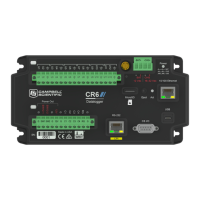hardware operates within published specifications before it is returned. To request recalibration
for a product, see www.campbellsci.com/repair.
It is recommended that you maintain a level of calibration appropriate to the data logger
application. Consider the following factors when setting a calibration schedule:
l The importance of the measurements
l How long the data logger will be used
l The operating environment
l How the data logger will be handled
See also About background calibration (p. 110).
You can download and print calibration certificates for many products you have purchased by
logging in to the Campbell Scientific website and going to:
https://www.campbellsci.com/calcerts.
NOTE:
Note, you will need your product's serial number to access its certificate.
Watch an instructional video.
8.1.1 About background calibration
The data logger uses an internal voltage reference to routinely self-calibrate and compensate for
changes caused by changing operating temperatures and aging. Background calibration
calibrates only the coefficients necessary to the running CRBasic program. These coefficients are
reported in the Status table as CalVolts(), CalGain(), CalOffset(), and CalCurrent().
Background calibration will be disabled automatically when the scan rate is too fast for the
background calibration measurements to occur in addition to the measurements in the program.
The Calibrate() instruction can be used to override or disable background calibration.
Disable background calibration when it interferes with execution of very fast programs and less
accuracy can be tolerated. With background calibration disabled, measurement accuracy over
the operational temperature range is specified as less accurate by a factor of 10. That is, over the
extended temperature range of –55 °C to 85 °C, the accuracy specification of ±0.08 % of reading
can degrade to ±0.8 % of reading with background calibration disabled. If the temperature of
8. CR6 maintenance 110

